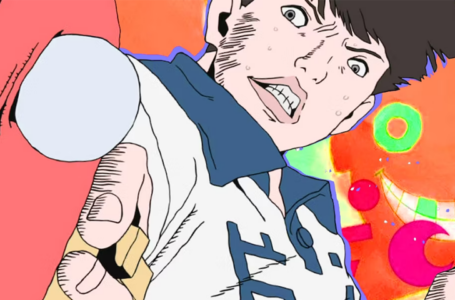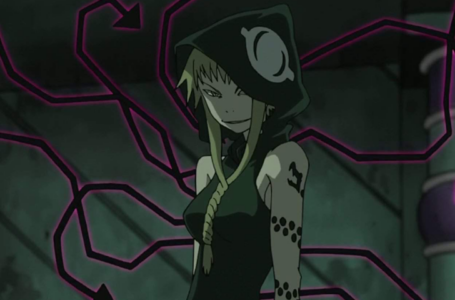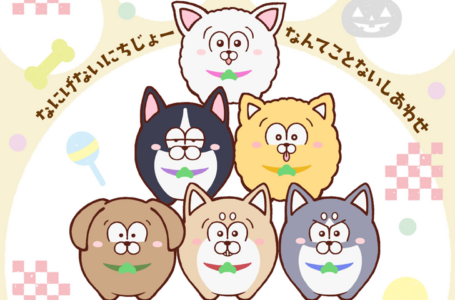Delving into the classic Urusei Yatsura
I’ve been getting rather into reading manga and light novels recently, as you can probably tell. So over the Christmas period, I decided that it was high time I investigated some of the all-time classics of the medium. Despite owning a beautiful “special edition” hardback copy of Berserk’s first volume for a while, I haven’t quite felt up to that yet — so I thought I’d kick off an exploration of the classics with Rumiko Takahashi’s legendary Urusei Yatsura. Specifically, a look at the first book currently available from Viz — which actually collects together what were originally the first two volumes of the manga.
I will note that I actually decided to do this well before I realised that not only is this year the Year of the Tiger (and thus there has been an astonishing amount of tiger-print bikini fanart just recently) but also we’re getting a rebooted Urusei Yatsura anime later this year. It was just a thoroughly happy coincidence.
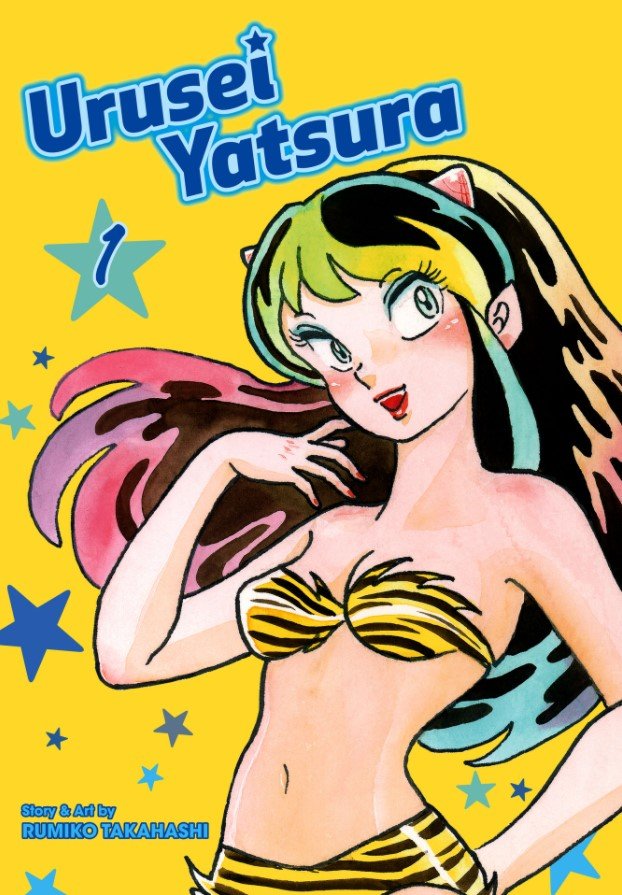
Urusei Yatsura is a series that I’ve been sort of passively aware of for quite a while — I believe the first time I heard about it was in Antonia Levi’s 1996 book Samurai From Outer Space: Understanding Japanese Animation, which I probably first read in the early 2000s — but have never investigated until now. Interestingly, bearing in mind this original context in which I learned about Urusei Yatsura, the series now acts as a solid touchstone as to how much our cross-cultural understanding has improved since the late ’90s.
I mention this because Levi specifically highlights the fact that Urusei Yatsura’s heavy reliance on inspiration from traditional Japanese mythology and specifically Shinto and Buddhist beliefs was considered to be quite challenging for a western (or, more accurately, American) audience back in the late ’90s. These days, however, we don’t bat an eyelid at popular fiction — regardless of medium — drawing heavy influences from these exact same sources.
And it hasn’t really been a conscious learning process, either; we’ve just seen more and more overtly “Japanese” works making it overseas as the years have gone by, allowing western audiences to gradually learn about these cultural, spiritual and religious elements almost by osmosis. With that in mind, we can probably consider Urusei Yatsura to be more accessible from a global perspective than ever before — which means it’s a perfect time to revisit it, or indeed, as in my case, explore it for the first time.
For the unfamiliar, Urusei Yatsura (which literally translates to “obnoxious people”) is a manga that, among other things, explores the troubled and rather chaotic relationship between unlucky pervert Ataru Moroboshi and the oni invader princess from space, Lum. I say “among other things”, because despite Lum being by far the most well-known element of Urusei Yatsura, in the manga’s early chapters, the series has a very “episodic” format, with Lum being completely absent in some instances. That said, it doesn’t take long until Takahashi clearly realised that she was onto something great with Lum, and as such she becomes a fixture in the series well before the first volume is complete.
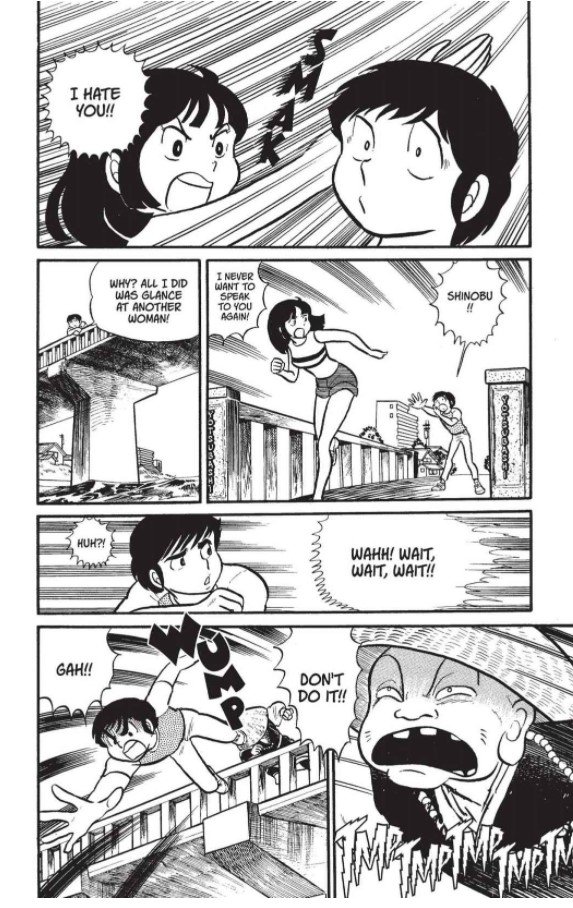
The series opens with probably the most famous narrative component of Urusei Yatsura: Moroboshi being “randomly” selected by the Oni people to participate in a deadly game of tag against Lum, with the Earth being subject to invasion and subjugation if Moroboshi isn’t able to catch Lum and touch her horns in the space of ten days. Unfortunately, Lum can fly and shoot thunderbolts, which naturally makes her a bit more challenging to catch — but she clearly didn’t count on the fledgling “perverted protagonist” trope bring able to counter her strengths in somewhat unexpected ways.
Needless to say, Moroboshi is eventually successful in capturing Lum, and a misunderstanding between them leads Lum to believe that he has actually proposed to her; she then becomes absolutely convinced that she’s the one he loves — and that she loves him. From hereon, she continually makes life very difficult for both Moroboshi and his actual (exceedingly long-suffering) girlfriend Shinobu.
Shinobu is actually a rather interesting character because she clearly has a lot of strength and independence of her own — indeed, the first chapter opens in medias res with Shinobu slapping Moroboshi in the face and seemingly dumping him for the transgression of, supposedly, “glancing at another woman”.
Almost immediately, we feel like we get a good idea of both Shinobu and Moroboshi’s respective characters and the dynamic between them. Shinobu has no patience for Moroboshi’s bullshit and doesn’t hesitate to express herself violently if he wrongs her; Moroboshi, meanwhile, is accustomed to Shinobu somewhat overreacting to situations, and knows that he can usually get away with being a bit of a perv in the long term.
This is a dynamic that we continue to see expanded as the series progresses. Shinobu keeps coming back to Moroboshi because it’s obvious she holds him in genuine affection — and likewise Moroboshi seems to genuinely care for her, as he often protests at Lum getting in the way of the pair of them being able to spend time together — but Moroboshi frequently finds himself in situations where he is unable to resist giving in to his baser instincts.
One one particularly memorable occasion, where Moroboshi is whisked away by Lum to compete in her home world’s annual Spring Equinox “battle” — actually a beanbag-throwing competition — he goes distinctly above and beyond the call of duty in an attempt to seduce a beautiful woman on the opposing team, which even Lum isn’t altogether happy about, particularly as his carelessness ends up causing the Oni team to lose.
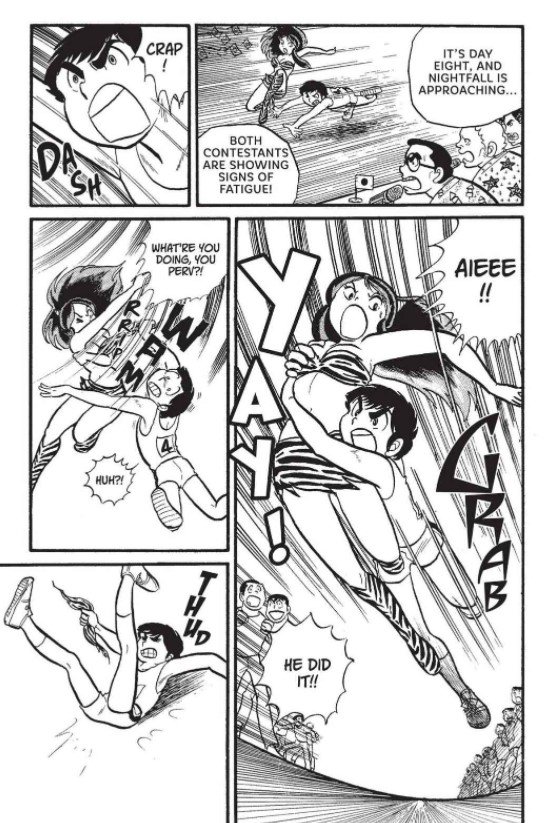
What’s interesting about Urusei Yatsura, though — at least in its early stages — is that there never seems to be any real “long-term” damage, except to Moroboshi’s overall reputation. For example, at the conclusion of the aforementioned Spring Equinox chapter, Moroboshi is depicted being tortured by the Oni for his idiocy, but once the next chapter rolls around everything is absolutely fine.
That damage to Moroboshi’s reputation is very real, though. At the outset of the series, it’s clear that people are familiar with him and his tendency towards bad luck — but following the initial situation with Lum (and a variety of subsequent mischief the pair of them get up to, often inadvertently) it becomes obvious that people, including his own parents, start to see him as initially something of a liability, and subsequently a bit of a figure of pity.
In some ways, we can argue that people probably feel grateful for Moroboshi’s presence in a strange sort of way, because while he may attract seeming chaos and misfortune to himself, people come to realise that all they need to do in order to remain free of misfortune themselves is simply to stand well back.
Despite the fact that Moroboshi obviously suffers quite a bit over the course of Urusei Yatsura — and we can argue that he thoroughly deserves his punishments in more than one instance — the whole thing never really feels mean-spirited. Although Moroboshi is lecherous, his affection for Shinobu — and, after some initial resistance, Lum — is obvious. Likewise, although Lum continually tries to get in the way of Shinobu, it always comes across as playfulness rather than being truly spiteful.
One quite pleasant thing about the series as a whole is the sense that we’re gradually getting to know the characters in a somewhat subtle manner rather than having things explicitly pointed out to us as in some more modern manga. Indeed, the aforementioned in medias res opening makes no effort to directly introduce Shinobu, Moroboshi and indeed recurring comic character Cherry; they’re simply there, and learning who they actually are is simply a matter of reading on and seeing what they get up to rather than having exposition and lore dumped on us.
This is an effective means of storytelling, but also a sign of Urusei Yatsura’s age. I don’t mean that as a criticism, mind; I simply mean that it’s obvious this was written in a very different time from now. The first chapters of Urusei Yatsura were originally published a full 44 years ago at the time of writing, and methods of storytelling in the manga medium — and in popular culture in general — have changed considerably since then. In many ways, it’s rather refreshing to read a story presented using Urusei Yatsura’s approach simply because it’s so very different to today’s most popular methods.
Since Urusei Yatsura ran for nearly 10 years in total, doubtless its overall “feel” changes as time goes on — and as Takahashi developed confidence in her own work. Urusei Yatsura was her commercial debut, after all, so one would expect it to take a little while for her to truly find her “voice”, and for that voice to change somewhat as time went on.
With that in mind, looking only at the first couple of volumes of Urusei Yatsura presents only a partial picture of what the series is all about — but suffice to say, it’s an entertaining, enjoyable way to kick things off. And, as previously noted, our collectively improved international awareness of Japanese spiritual, religious and cultural beliefs means that as a series, it’s more accessible and fun to explore in 2022 than it ever has been before. So why not celebrate the Year of the Tiger in the best possible way — with Lum?
Join The Discussion
Rice Digital Discord
Rice Digital Twitter
Rice Digital Facebook
Or write us a letter for the Rice Digital Friday Letters Page by clicking here!
Disclosure: Some links in this article may be affiliate links, which means we may earn a small commission if you make a purchase after clicking on them. This is at no additional cost to you and helps support Rice Digital!
- Letter from the Editor: passing the torch - June 30, 2023
- Super Woden GP 2 is looking promising - June 30, 2023
- Inti Creates is making a 32 bit-style Love Live action platformer - June 26, 2023




